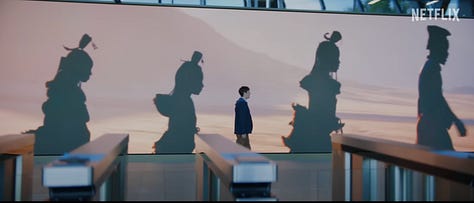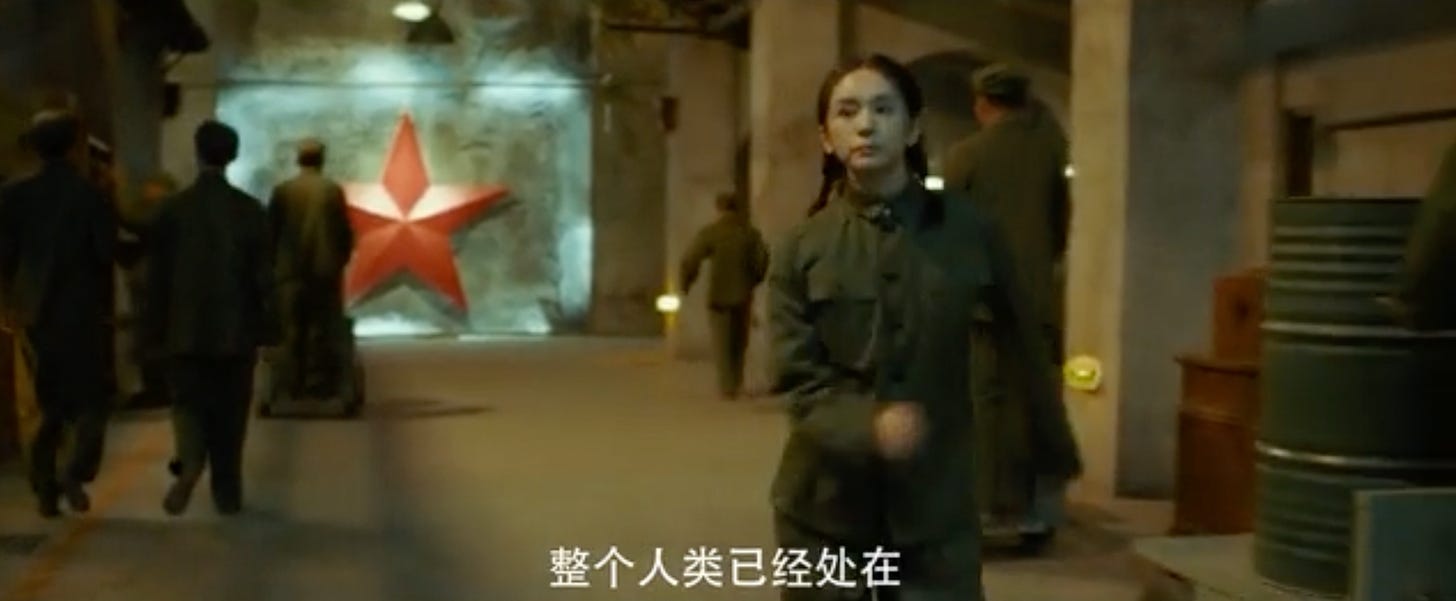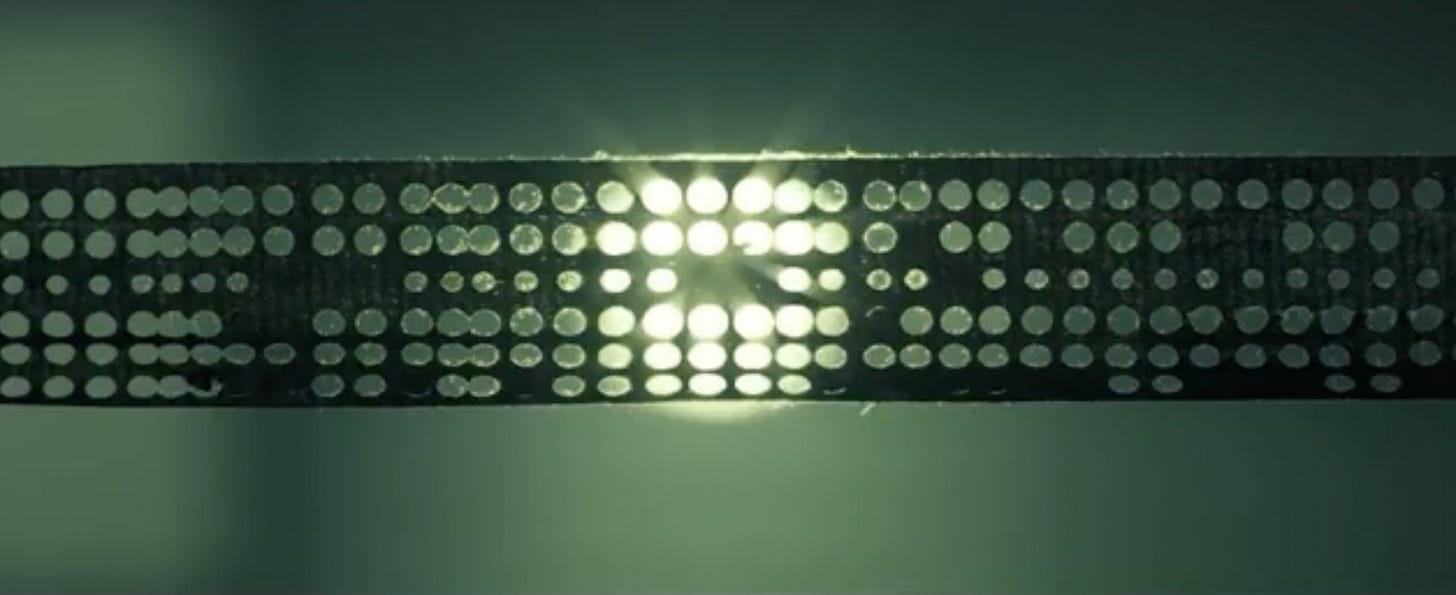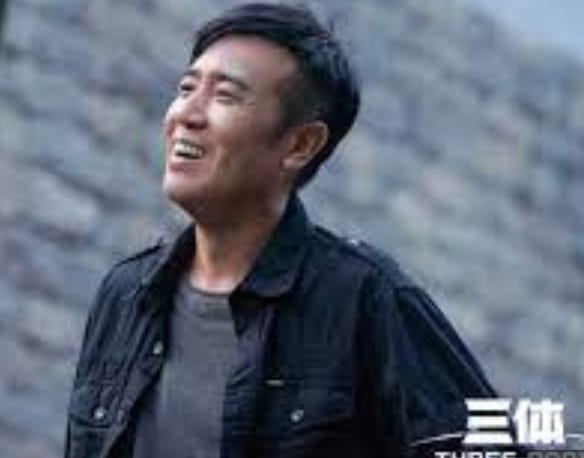ESSAY: Three Body Problem has a problem
A science fiction saga so bleak that the sight of three men spilling beer on the ground in a field infested with locusts is a stirring testament to hope and faith in humanity.
Liu Cixin’s imaginative and path-breaking science fiction novel, “The Three Body Problem,” is not only China’s most successful crossover to the international market for science fiction but has now been adapted into divergent, dualing film versions.
The first version to come out, produced in China by Tencent, is a plodding but skillfully drawn out thirty-part series loyal to the original setting, bleak tone and scientific jargon of the novel. It had its debut on CCTV at this time last year. Since then a subtitled version has become available on PBS and Prime.
“3 Body Problem” produced by Netflix will be released soon, testing the market for Chinese science fiction with distinct American characteristics, blessed by Hollywood’s golden touch. It’s unlikely to get far in China, however, due to its colorful Cultural Revolution scenes.
Having both versions released in short order will no doubt be pleasing to fans of Liu Cixin’s fiction, though fans are bound to break into two warring camps, each strongly favoring one adaptation over the other, since the basic language of production, in every sense of the word, differs.
That’s not to say the “Chinese version” doesn’t offer some glimpses of special effects magic, or the “American version” by virtue of having a large number of non-Chinese cast and crew, will not have any fidelity to the original story, which is rooted in racially-neutral science, but it does raise interesting questions about contesting worldviews and culture in translation.
Although author Liu Cixin has given his blessing to both projects, he has somewhat clumsily entered the fray of arguing fraught comparative treatments, concluding that American entertainment values need to “clearly distinguish white from black” while Chinese can handle a more nuanced and ambiguous conclusion in keeping with his original story.
The furor also serves to remind viewers that while cultures may vary from place to place, the laws of physics are supposed to be the same everywhere, and if they are not, the universe as we know it, and earth’s very existence is upended, wherein lies the crux of the story.
The title itself speaks to the author’s obsession with theoretical physics. The three-body problem refers to the leap in Newtonian computational complexity between two objects moving in relation to one another, and three. The moon goes around the earth, and while each perturbs the other to a differing degree, the strong pull of the earth on the moon and the gentle tug of the moon on the earth are calculable. Add a third body, say another moon, and the math and physics get so complicated that the orbital paths play out according to chaotic dynamics difficult to predict.
At the core of the story is a not-too-distant interstellar civilization that has three suns instead of one, known appropriately as the Trisolarians. They have a problem with the chaotic conditions of a fundamentally unstable system, which imbues their three-body problem with desperate existential stakes. Is their attempt to reach earth a cry for help or an invasion presaging the end of humanity?
“Do not answer them!” (不要回答) has already become a popular catchphrase in China where the Tencent series is doing well and stimulating people to think beyond the box of terrestrial thinking and status quo tedium. It’s also got original theme music, and some of the lines, sung in English, hint at just how high the stakes are:
“I’ve seen thing you people won’t believe… soon our planet with vanish…”
The novel differs in English and Chinese, starting with the title, which is 三体 (‘san ti’ or three body) in the original but helpfully rendered “Three-Body Problem” in English. Ken Liu and Joel Martinson share translation credits, the first and third section of the trilogy done by the former, the middle section by the latter.
Chinese-American translator Ken Liu who, coincidentally, shares the same surname as the author, explains that he added notes and made changes to better reach a Western audience, and not just on the level of language. The Cultural Revolution scenes are played down in the Chinese version, in part reflecting authorial focus, but also political realities in China. The controversial scenes are played up and amplified by being placed front and center in the international English release.
Variety summed up the dilemma with the following lament from a Chinese Weibo user: “With the background of the Cultural Revolution, the mainland doesn’t dare shoot it and foreign countries can’t shoot it well.”
But it’s not just China that has political issues with the story. Netflix was criticized by Senator Marsha Blackburn and a group of right-wing US lawmakers for “normalizing” human rights abuses in China by doing business with an irascible Chinese writer such as Liu.
Perhaps in reaction to this, Netflix is said to be watering down the Chinese elements of the plot, which in turn has led to accusations of “white-washing” since most of the Netflix cast is not only not of Chinese descent but the main action of the story inexplicably moves to England, which presumably represents the far limits of foreign-ness that fickle, red-blooded American audiences in Ms. Blackburn’s constituency are prepared to accept.
Ye Wenjie, an embittered Chinese scientist, working at an astronomical observatory in China of the 1960s, overcomes the limits of the almost comically backward computer technology of the time—clunky mainframes and paper computer tape--to make a breakthrough in extraterrestrial communication with another civilization.
Dispirited by the chaos of the times, she surreptitiously invites the aliens to visit earth.
This shocking discovery is mostly kept under wraps until the present day setting for the story which is set in China in the early 2000s.
There are mysterious goings-on in the global world of specialized physics research as one after another prominent physicist is found dead, presumably from suicide, after embarking on research on the same delicate topic.
The reluctant protagonist, Wang Miao, is a bookish nanomaterials expert who gets drawn into the intrigue when Yang Dong, an attractive woman he met only once becomes one of the mysterious victims. Why did she throw her life away, so accomplished a scientist with so much promise? It turns out it was her mother who made the initial contact with the aliens during the 1960s, and now, an old woman, she retains a cold air of mystery and secrecy that is hard to fathom.
All the key characters are distinct and well-played, though some of the minor roles, most especially the poorly-written foreign characters, look and sound like stock imperialists straight out of North Korean Central Casting, menacing accents and all.
Much of the humor of the show, and comic relief from the difficult and dour realities of high-end physics and potential civilizational collapse comes from the mouth of a wise-guy policeman who doesn’t understand the science but possesses a good sense of humor and is a sharp judge of human nature.
Shi Qiang stands in for the Everyman, and offers a hint of hope in an otherwise relentlessly gloomy story, doing what he can to keep the absent-minded scientists in line and the audience enthralled. It’s not every TV series that can elevate a story so bleak that the sight of three men pouring beer on the ground in a field infested with locusts passes as a testament to hope and faith, but Shi Qiang somehow pulls it off.
The Tencent version is overall an impressive production, especially considering the complexity of the source material, the political limitations of shooting in China and a reportedly modest budget of US ten million.
On March 21, the 8-episode Netflix version will drop, and so will many jaws, depending on just how much the story has been twisted to suit American tastes. The trailer suggests it’s imbued with Western ethnic sensitivities and a mod-squad multicultural approach in contrast to the plainly monocultural, but serviceable Chinese version.





It’s rather nervy for Netflix to gut the original story and stuff it with a host of new characters, all in dubious service to broadening commercial appeal, but at least the special effects promise to be good.
That’s Hollywood!
Compare the trailers below…















